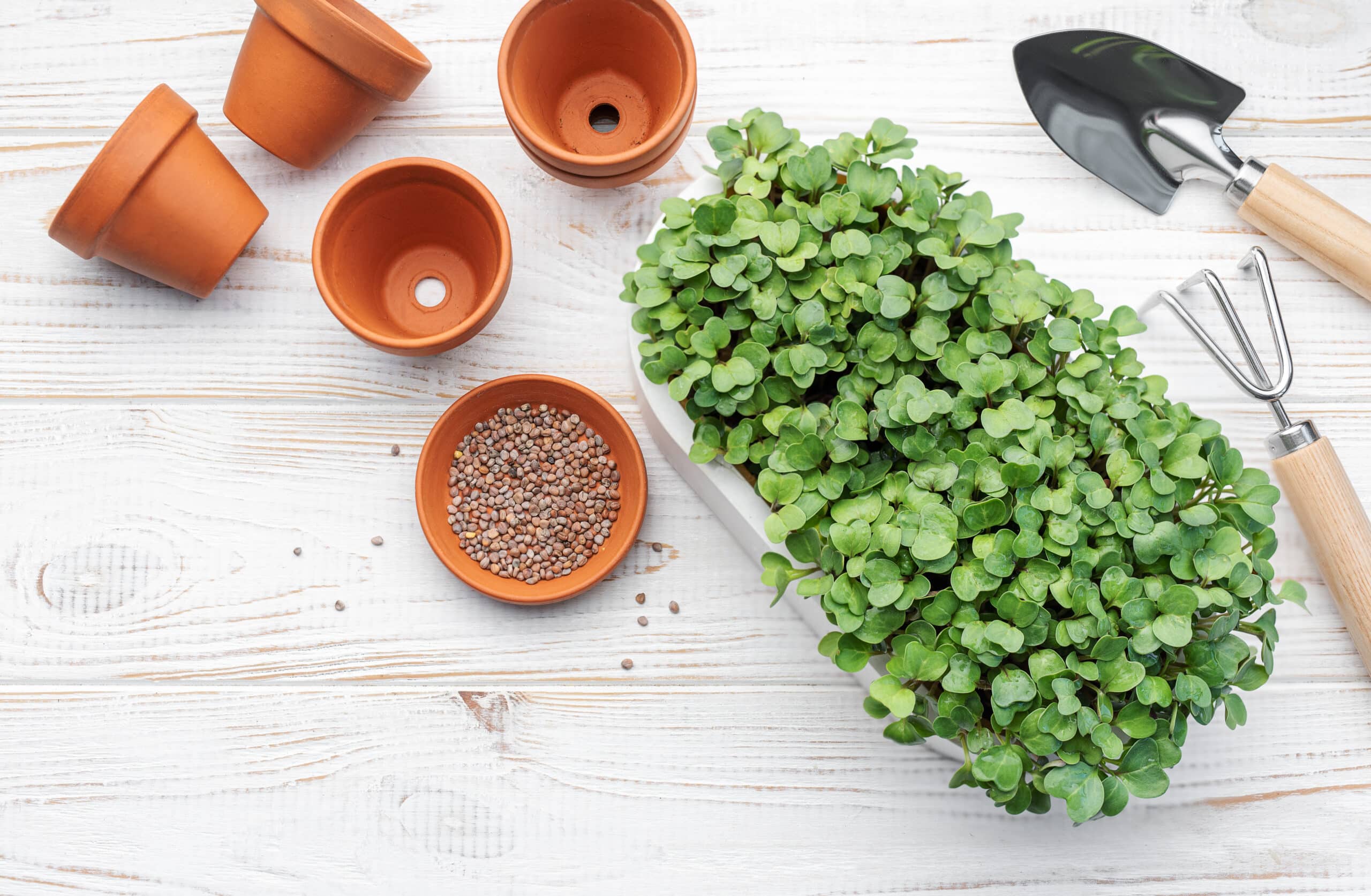What Happens After You Cut Microgreens?
Key Takeaways
- Proper storage methods for cut microgreens include refrigeration in a plastic bag or container, storing in an opened container with a wet paper towel, or using an airtight container with proper ventilation
- The shelf life of cut microgreens can vary depending on the variety and storage method
- Microgreens generally cannot regrow after being cut, but under certain conditions, such as having at least two leaves remaining on the plant, regrowth is possible
Microgreens are tiny, nutrient-packed greens that are harvested at the early stages of plant growth. These delicate greens are known for their intense flavors and vibrant colors, making them a popular addition to salads, sandwiches, and other dishes. But what happens after you cut microgreens? How should you store them to maintain their freshness and quality? Let’s explore the different methods and recommendations for storing cut microgreens.
The Best Ways to Store Microgreens
When it comes to storing cut microgreens, there are several approaches suggested by experts. Let’s take a look at the different methods:
Method 1: Refrigeration in a Plastic Bag or Container
According to Microgreens Corner, one of the best ways to store cut microgreens is to refrigerate them in a plastic bag or container. This method helps to maintain the freshness and crispness of the greens. Simply place the harvested microgreens in a plastic bag or container, seal it tightly, and store it in the refrigerator. This method is recommended for short-term storage, typically up to a week.
Method 2: Opened Container with a Wet Paper Towel
Microveggy suggests a slightly different approach. They recommend using a ceramic knife or scissors to harvest the microgreens and briefly washing them in ice-cold water with a small amount of bleach or hydrogen peroxide. After washing, place the microgreens in an opened container with a wet paper towel on top to maintain moisture. Store the container in the refrigerator at a temperature of around 4°C (or 40°F) for up to a week. Avoid using sealed bags and do not freeze the microgreens.
Method 3: Airtight Container with Proper Ventilation
Master Microgreens suggests storing cut microgreens in an airtight container with proper ventilation. This method involves placing the harvested microgreens in a container and ensuring there is proper airflow. Refrigerate the container at a temperature of 4°C (39°F) to extend the shelf life of the microgreens. With this method, the microgreens can last up to two weeks when stored correctly.
Method 4: Variety and Storage
According to Plant Hardware, the shelf life of cut microgreens can vary depending on the variety and how they are stored. Some varieties may last for several days, while others can stay fresh for up to a week. It is essential to consider the specific type of microgreen and follow the appropriate storage recommendations.
Can Microgreens Regrow After Cutting?
One common question that arises is whether microgreens can regrow after being cut. The answer to this question depends on the specific situation and the remaining leaves on the plant.
No, Microgreens Generally Cannot Regrow
Grocycle explains that in most cases, microgreens cannot be regrown after cutting them. Once the microgreens are harvested, they are typically consumed entirely, and regrowth is not feasible. This is because microgreens are harvested at a very early stage of plant growth, before they have developed a strong root system to support regrowth.
Yes, Microgreens Can Regrow Under Certain Conditions
Total Gardener, on the other hand, suggests that microgreens can regrow if at least two leaves remain on the plant after harvesting. With a sufficient number of leaves, the microgreen plant has the potential to continue growing and producing more leaves. However, it is important to note that the regrowth potential may vary depending on the specific type of microgreen and growing conditions.
Conclusion
After cutting microgreens, proper storage is crucial to maintain their freshness and quality. Refrigerating the cut microgreens in a plastic bag or container, an opened container with a wet paper towel, or an airtight container with proper ventilation can help extend their shelf life. The duration of storage may vary depending on the variety of microgreen and storage method chosen.
As for regrowth, microgreens generally cannot be regrown after cutting them. However, under specific conditions, such as having at least two leaves remaining on the plant, some microgreens may have the potential to regrow.
Related Websites:
FAQs:
Q: What are the benefits of consuming microgreens?
Consuming microgreens provides various benefits such as high nutrient content, including vitamins and minerals. They also contain antioxidants that help reduce the risk of chronic diseases and promote overall health.
Q: How do you properly handle freshly cut microgreens?
To handle freshly cut microgreens, it is important to wash them gently to remove any dirt or debris. After washing, gently pat them dry with a clean towel or paper towel. Handle them with care to avoid crushing or damaging the delicate leaves.
Q: What are the signs of spoilage or deterioration in microgreens?
Signs of spoilage or deterioration in microgreens include wilting, discoloration, sliminess, foul odor, or the presence of mold. It is important to discard any microgreens that show these signs to ensure food safety.
Q: What are the culinary uses of cut microgreens?
Cut microgreens can be used in various culinary applications. They can be added to salads, sandwiches, wraps, soups, or smoothies for an extra burst of flavor and nutritional value. They can also be used as garnishes or toppings to enhance the presentation of dishes.
Q: What is the nutritional value of microgreens?
Microgreens are packed with nutrients and are more concentrated than their mature counterparts. They contain vitamins, minerals, and antioxidants. The specific nutritional value may vary depending on the type of microgreen, but they generally provide a range of essential nutrients.






